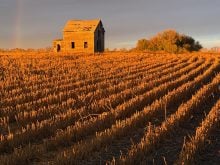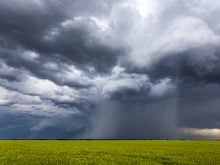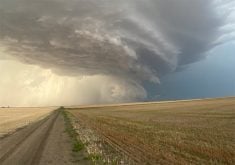El Nino can affect the kind of weather we might expect this winter.
The formation and movement of one system can impact how other systems behave around the world. This is called teleconnection, which refers to the long-distance relationships or connections between climate events that occur in different parts of the world.
This fundamental concept in climate science explains how climate events in one part of the world can have far-reaching consequences. It underscores the complexity and interconnectedness of the Earth’s climate system.
For example, say there’s a strong ridge of high pressure over the eastern Pacific Ocean. This ridge will force the jet stream to take a path that often results in storm formation over central North America. If the high-pressure ridge were to move or weaken, it would eventually have an impact on weather in our neck of the woods.
Read Also

New coal mine proposal met with old concerns
A smaller version of the previously rejected Grassy Mountain coal mine project in Crowsnest Pass is back on the table, and the Livingstone Landowners Group continues to voice concerns about the environmental risks.
Now take this same scenario and examine the weather systems that influence that ridge of high-pressure and the connections to the systems around it. In the case of El Nino, we have changes in one part of the Pacific that are connected with weather systems in a totally different part of the ocean.
Taking this view even further, weather systems around us will impact any storm systems that might form under this scenario. Now you begin to see how complicated it can get. The conditions across the Pacific Ocean might be favourable, through teleconnections, to bring a certain type of weather to our region, but conditions across our region, again through teleconnections, might override what is happening across the Pacific Ocean.
With this in mind, you start to understand how difficult it can be to create long-term weather forecasts. But wait, it gets even more complicated!
We can throw chaos theory into the mix. First, I admit my understanding of chaos theory is rudimentary at best, even after looking it up using one of the AI programs. That said, here is how I see chaos theory’s impact on weather and forecasting.
Chaos theory is based on the idea that what appear to be random events instead have a pattern, and if so, can be predicted. The problem is, we can’t measure the environment affecting the event in enough detail to determine what will happen.
One example is a blender. As you blend something, certain patterns develop in the swirl of materials, but that is because you are looking from the outside in. If you were inside the blender, it would appear totally chaotic.
In weather, this same idea holds true. The problem is, we just can’t measure our atmosphere and surface conditions in enough detail to know how everything will interact. Due to teleconnections and chaos theory, a relatively small change to conditions can have a dramatic effect on weather at any one location and this impact tends to be amplified as distance increases from the initial change.
If we tie chaos theory to El Nino and teleconnections, we see large changes instead of a small changes in the atmosphere. These influence the way the atmosphere behaves further downstream. This alone gives us an idea of weather we can expect, but any additional small changes thanks to chaos theory could lead to changes that we can’t predict.
This is why we do not always see the same weather pattern during an El Nino.
In a textbook example of El Nino, our part of the world will see a warmer and drier than average winter– but not every time. We have also had cold and snowy El Nino winters.
If you are a betting person, maybe 50 per cent odds are pretty good but that means there is about a 25 per cent chance the winter will be average and a 25 per cent chance it will be colder than average.
If I were to place a bet, I would go with an above average winter, but wouldn’t put too much money on it.
Daniel Bezte is a teacher by profession with a BA in geography, specializing in climatology, from the University of Winnipeg. He operates a computerized weather station near Birds Hill Park, Man. Contact him at dmgbezte@gmail.com.


















